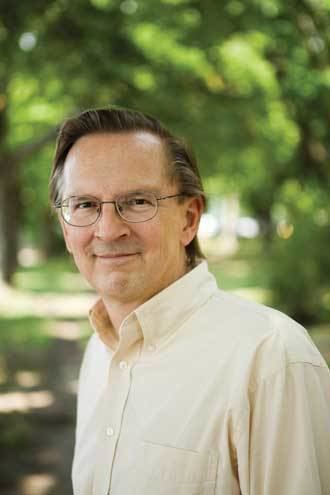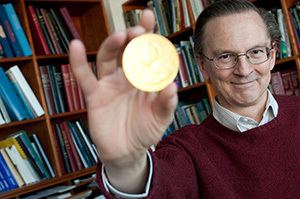Citizenship Canada | Role Biologist Name Jack Szostak | |
 | ||
Institutions Harvard Medical SchoolHoward Hughes Medical Institute Alma mater McGill UniversityCornell University Thesis Specific binding of a synthetic oligonucleotide to the yeast iso-1 cytochrome c̲ mRNA and gene (1977) Notable awards Nobel Prize for Physiology or Medicine (2009)Lasker Award (2006)NAS Award in Molecular Biology (1994) Awards Nobel Prize in Physiology or Medicine Similar People | ||
Residence United States of America | ||
2009 nobel lecture in physiology or medicine by jack w szostak
Jack William Szostak (born November 9, 1952) is a Canadian American biologist of Polish British descent, Nobel Prize laureate, Professor of Genetics at Harvard Medical School and Alexander Rich Distinguished Investigator at Massachusetts General Hospital, Boston. Szostak has made significant contributions to the field of genetics. His achievement helped scientists to map the location of genes in mammals and to develop techniques for manipulating genes. His research findings in this area are also instrumental to the Human Genome Project. He was awarded the 2009 Nobel Prize for Physiology or Medicine, along with Elizabeth Blackburn and Carol W. Greider, for the discovery of how chromosomes are protected by telomeres.
Contents
- 2009 nobel lecture in physiology or medicine by jack w szostak
- Jack w szostak
- Early life
- Research
- Awards and honors
- References

Jack w szostak
Early life

Szostak grew up in Montreal and Ottawa. Although Szostak does not speak Polish, he stated in an interview with Wprost weekly that he remembers his Polish roots. He attended Riverdale High School (Quebec) and graduated at the age of 15 with the scholars prize. He graduated with a B.Sc in cell biology from McGill University at the age of 19. In 1970, as an undergraduate, he participated in The Jackson Laboratory's Summer Student Program under the mentorship of Dr. Chen K. Chai. He completed his PhD in biochemistry at Cornell University (advisor Prof. Ray Wu) before moving to Harvard Medical School to start his own lab at the Sydney Farber Cancer Institute. He credits Ruth Sager for giving him his job there when he had little yet to show. In 1984 Howard Goodman lured him away to Massachusetts General Hospital and the Department of Molecular Biology. He was granted tenure and a full professorship at Harvard Medical School in 1988.
Research

Szostak has made contributions to the field of genetics. He is credited with the construction of the world's first yeast artificial chromosome. That achievement helped scientists to map the location of genes in mammals and to develop techniques for manipulating genes. His achievements in this area are also instrumental to the Human Genome Project.

His discoveries have helped to clarify the events that lead to chromosomal recombination—the reshuffling of genes that occurs during meiosis—and the function of telomeres, the specialized DNA sequences at the tips of chromosomes.
In the early 90s his laboratory shifted its research direction and focused on studying RNA enzymes, which had been recently discovered by Cech and Altman. He developed the technique of in vitro evolution of RNA (also developed independently by Gerald Joyce) which enables the discovery of RNAs with desired functions through successive cycles of selection, amplification and mutation. He isolated the first aptamer (term he used for the first time). He isolated RNA enzymes with RNA ligase activity directly from random sequence (project of David Bartel).
Currently his lab focuses on the challenges of understanding the origin of life on Earth, and the construction of artificial cellular life in the laboratory.
Beyond his research, he has delivered talks about the origin of life on Earth, as he did at the first Starmus Festival in the Canary Islands, in 2011. He subsequently joined the Starmus Board of Directors, and his 2011 lecture was published in the book Starmus: 50 Years of Man in Space.
Awards and honors
Szostak has received several awards and honors for his contributions. He is a member of the National Academy of Sciences, American Academy of Arts and Sciences and New York Academy of Sciences. Is a member of the Kosciuszko Foundation Collegium of Eminent Scientists of Polish Origin and Ancestry. He has received the following awards:
